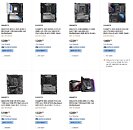KLEVV Reveals New DDR5 Standard and Gaming Memory
KLEVV, an emerging memory brand introduced by Essencore, today announced the latest addition to its lineup of computer memory upgrades with new DDR5 memory series, including DDR5 standard memory and signature DDR5 series of overclocking/gaming RGB memory. KLEVV DDR5 memory offers assurance of QVL testing with major motherboard brands' Z690 platforms that support the latest Intel 12th Generation 'Alder Lake' Core Processors.
KLEVV DDR5 standard desktop memory (U-DIMM) will adopt SK Hynix chips and will first launch in a 16 GB capacity with JEDEC standard frequencies of 4,800 MHz CL40-40-40 at a power-efficient 1.1 V. KLEVV DDR5 standard desktop memory kits have passed QVL testing with Z690 motherboards from leading partners including ASRock, ASUS, Gigabyte, and MSI, assuring outstanding compatibility for PC builders. Larger capacity 32 GB modules and standard memory for laptops (SO-DIMM) will follow soon.
KLEVV DDR5 standard desktop memory (U-DIMM) will adopt SK Hynix chips and will first launch in a 16 GB capacity with JEDEC standard frequencies of 4,800 MHz CL40-40-40 at a power-efficient 1.1 V. KLEVV DDR5 standard desktop memory kits have passed QVL testing with Z690 motherboards from leading partners including ASRock, ASUS, Gigabyte, and MSI, assuring outstanding compatibility for PC builders. Larger capacity 32 GB modules and standard memory for laptops (SO-DIMM) will follow soon.











































































